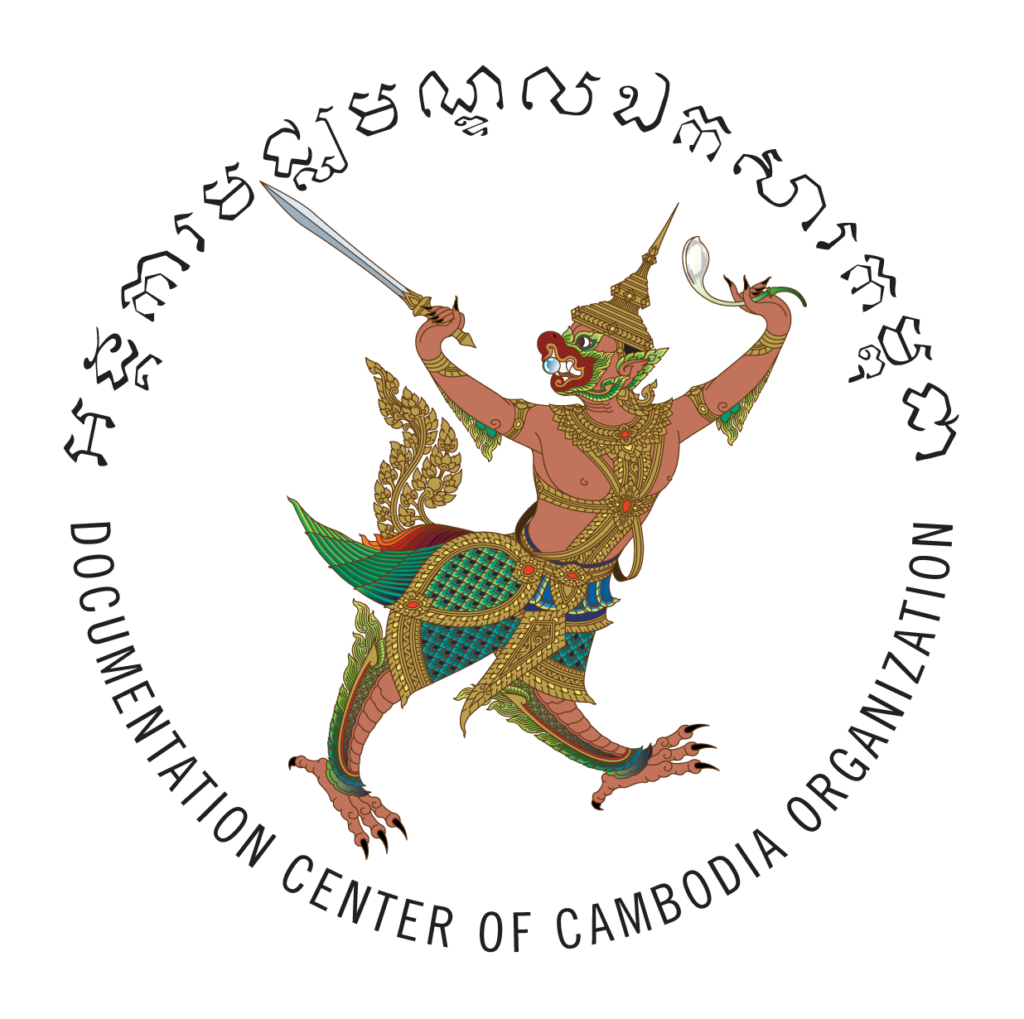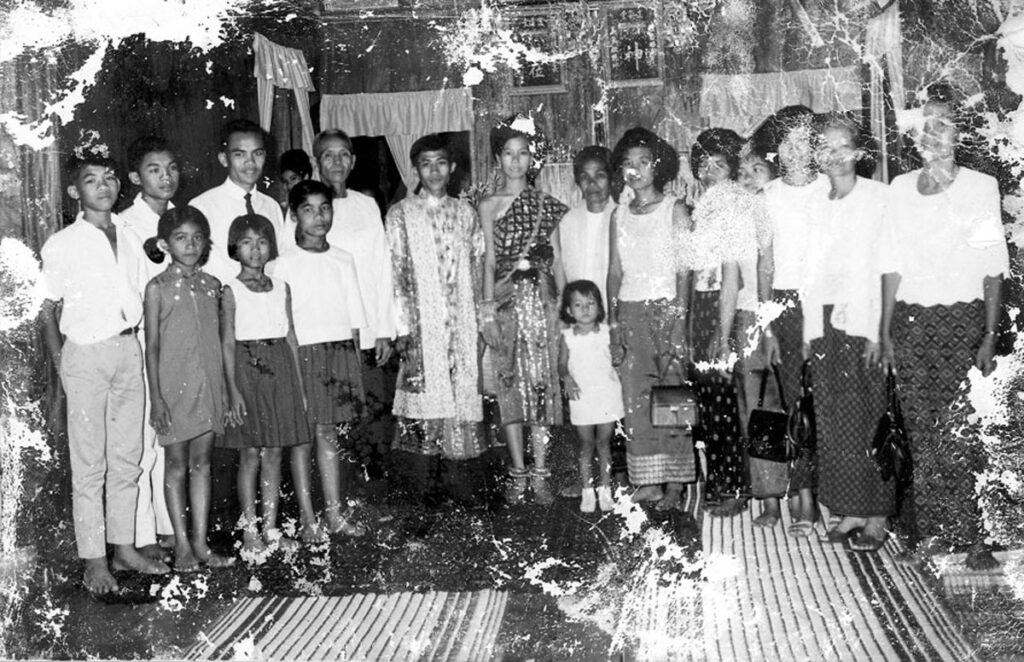Thai was a smart man. Before 1970, he studied at the agricultural school in Kampong Cham Province. He rented a house there and fell in love with Huot Phannary, the landlord’s daughter. We call her Nary. She is a well behaved and educated woman who taught sports. When King Sihanouk visited our province, Nary greeted him and put a garland of flowers around his neck.
Thai got at a job at the Ministry of Agriculture in Phnom Penh during the Lon Nol regime. Even though he was given food such as canned fish and milk, his salary was not enough to support his family, so he still had to depend on his parents for help.
In 1973, Thai went for training in Japan, while Nary and her three children lived with her parents. He tried to get permission from the Japanese Ministry of Foreign Affairs for his wife and children to move to Japan. But Nary insisted on bringing her parents, and they weren’t allowed to immigrate. When Thai finished his studies, he was made chief of the agricultural office in Kampong Cham. He went back to Phnom Penh once or twice a week.
When the Khmer Rouge took control over the country, Thai and his family wanted to return to their home town. Halfway there, the Angkar invited Thai for re-education. Nary was three months pregnant when he was captured. The Angkar told her to wait for her husband, who would come back soon. But Thai never came back.
Later, one of my relatives met a prisoner when he was fishing. He asked the prisoner if he knew a man named Thai. The prisoner told him that Thai was captured at a pagoda near his prison. When Nary heard this, she assumed that Thai must have been killed, but continued to ask about him in secret. News of this reached the cooperative chief, who began criticizing her for not working hard enough. But in fact, she worked extremely hard day and night without a break.
After 1979, I saw a book on Tuol Sleng Prison that one of the villagers was reading. It had a list of names at the end. That’s where I saw Thai’s name; it said he was an engineer. I knew then that Thai must had been killed because the Angkar would not let educated people live for long.
My brother Thy lived with Thai in Phnom Penh and passed the medical school entrance exam there. He left the city with Thai and his family during the evacuation. Along the way, one of Thy’s friends was captured, and Thy thought he would be next, so he decided to run away. Before he left, he said goodbye to Nary and my mother. I met him at a kitchen and gave him some corn to bring along. He told me that if anyone asked about him, I should say I didn’t know him. I had never had any news of again. The Angkar questioned me about Thy at a meeting, but I said I did not know anything and eventually they stopped asking. Whenever the Angkar called me for questioning, I dressed in many layers of clothes. I felt I would be more comfortable if I was wearing thick clothes when I was killed.
When the Khmer Rouge regime collapsed in 1979, many villagers said they saw Thy in a car near Kilometer Number 9 just outside Phnom Penh. They said he was wearing a khaki soldier’s uniform.
Nowadays, Nary is living in the United States with her three children. She still wants information on Thai. But I feel that both Thai and Thy are dead. If they were still alive, they would have returned home by now because they loved their family.
Sam Sin Thai’s biography states that he was captured by the Khmer Rouge on January 11, 1976 in Khsach Kandal District of Kandal Province and sent to Tuol Sleng Prison.

